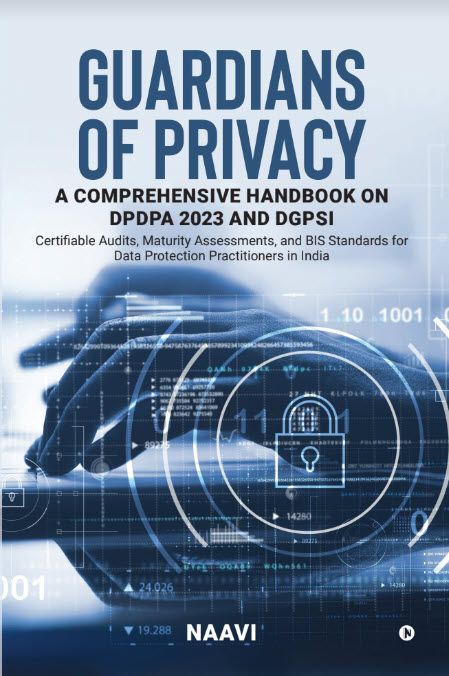Presently two important petitions regading ITA 2008 are before the Supreme Court. The first petition Shreya Singhal v. Union of India has argued that Section 66A of the Act is unconstitutional and needs to be deleted. The second petition Dilipkumar Tulsidas Shah v. Union of India, W.P. (C) 97/2013 has sought definition of a proper system for regularization of the cyber crime investigation process. Supreme Court has issued necessary notices in this regard to the Union of India.
It is to be noted that if these petitions are taken to the logical end, the Supreme Court may provide a “Cyber Criminal Procedure Code” which could be a manual for the Police. This is welcome though it appears sad that the highest Court of the country has to spend its time on a routine administrative manner which should have been addressed by the officials of the Ministry of Communications and Information Technology/Department of Electronics and Information Technology/Department of (MCIT/DEITY).
While these petitions have brought to the attention of the Supreme Court the requirements for defining proper procedures in the pursuance of the criminal prosecutions under ITA 2008, it is necessary for us to also bring to the notice of the Supreme Court that MCIT/DEITY is floundering on the civil justice aspects of ITA 2008 also.
It may be recalled that under Section 61 of the Act, ITA 2008 has placed all civil proceedings where a victim of a contravention of ITA 2008 can claim compensation upto Rs 5 crores exclusively under the jurisdiction of the “Adjudicators” as defined under Sections 46 of the Act. MCIT assumed complete responsibility for this cyber judiciary system by appointing the IT Secretaries of State Governments and Union Territories as the adjudicators for each state or Union Territory. MCIT also appointed the Controller of Certifying Authorities (CCA), another quasi judicial authority from out of its own ranks.
As a result the MCIT/DEITY which has assumed complete responsibility for formation of the Indian Cyber law in the first place has also assumed complete responsibility for the maintenance of the Civil judicial system.
The criminal justice system was being administered by the traditional infrastructure consisting of the Police, the public prosecutors and the Magistrates. But it was still the MCIT which called all the shots when it came to any clarifications on the law. Hence if we have come to a situation where the Supreme Court has to draft the “Cyber Criminal Procedure Code” today, it reflects on the inefficiency and incompetence of MCIT in managing ITA 2008.
While attention is now focussed on the revision of the Cyber Crime investigation process and drafting of some of the sections, it is necessary to point out that the same incompetence can also be identified in the administration of the Civil Judicial aspects of ITA 2008.
Firstly, the only appeal system called the “Cyber Appellate Tribunal (CAT)” which has to hear the appeals of all the adjudicating officers of the country has been kept dysfunctional since July 1, 2011 when the then acting “Presiding Officer/Chairman” attained super annuation. Despite being aware of this possibility by lapse of time, MCIT did not take any action to appoint a replacement in time. Further in December 2011, Justice S.K.Krishnan was appointed as “Member Judiciary” for the CAT but was not designated as “Chairman”. As a result he was not empowered to conduct any hearings. Justice Krishnan completed his tenure by November 2012 and attained super annuation without hearing any case. Now that even he is not available, MCIT has still not been able to appoint any other person as the “Chair Person” so that CAT can become functional. The department has however appointed a “Member Technical” and also a “Head of Department for CAT” but they have no role in conducting the judicial proceedings of CAT.
In view of the current situation, if any Adjudicator passes any decision in a State or Union Territory, one of the aggrieved parties can file an appeal and the proceedings get stalled.
There are several such appeals now pending at the CAT where the victims of Cyber Crimes are waiting endlessly for justice. This matter has been repeatedly brought to the attention of DEITY officials as well as the Minister/s in charge without any action.
In the State of Karnataka, the problem has been compounded further because the Adjudicator in an earlier decision has ruled that “No Company can invoke any proceedings under Section 43 of ITA 2008 and No complaint can be invoked against a Company under Section 43 of the Act”. As a result, until this decision is over turned in an appeal no civil proceedings can take place in Karnataka. Appeal on this is now pending at CAT and since CAT is dysfunctional, Karnataka Civil proceedings under ITA 2008 is also dysfunctional for the time being.
MCIT/DEITY has singularly failed in its duty to public in either training its own executives properly on the Cyber Law aspects nor in taking proper administrative decisions in time. It is therefore not reasonable to expect that they would be able to set things right on their own.
There is therefore a need for Supreme Court to intervene even in this case and set right the civil procedure system as per ITA 2008. Supreme Court needs to think if MCIT/DEITY is capable of administering the ITA 2008 or a decision has to be taken for a total change of the system which may perhaps require another major surgery to ITA 2008.
Perhaps some body may file another PIL at Supreme Court requesting the Supreme Court to also consider defining the civil procedure system of ITA 2008.
Naavi






